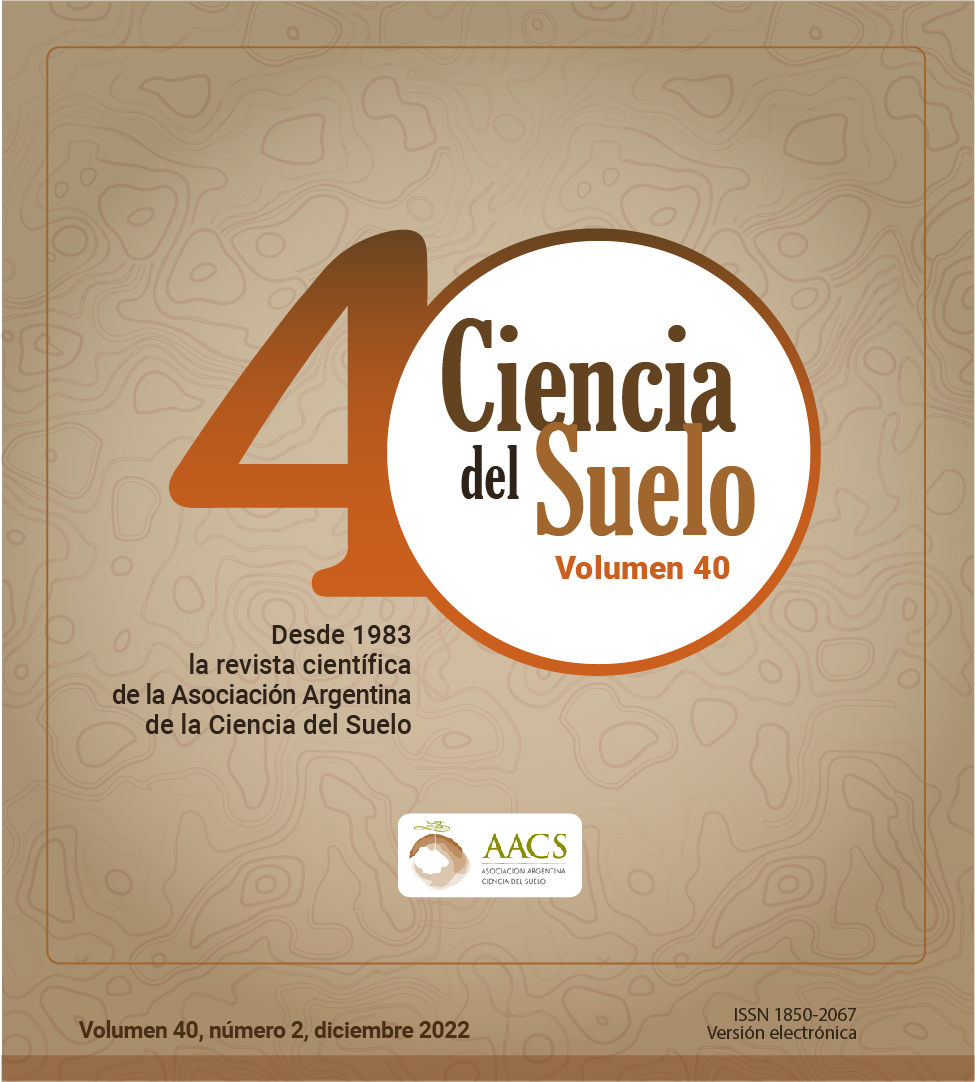Ver ítem
- xmlui.general.dspace_homeCentros Regionales y EEAsCentro Regional Buenos Aires SurEEA BalcarceArtículos científicosxmlui.ArtifactBrowser.ItemViewer.trail
- Inicio
- Centros Regionales y EEAs
- Centro Regional Buenos Aires Sur
- EEA Balcarce
- Artículos científicos
- Ver ítem
Interacción entre hongos endofitos y micorricicos en festuca arundinacea en respuesta a la fertilización fosfatada = Interaction between endophyte and micorrhizal fungi in festuca arundinacea in response to phosphate fertilization
Resumen
Nuestro objetivo fue evaluar la producción y partición de biomasa de plantas de Festuca arundinacea (festuca alta) infectadas con el hongo endófito Epichloë coenophiala e inoculadas con hongos micorrícicos arbusculares (HMA) en respuesta a la fertilización fosfatada (P). Para ello, se realizó un experimento en macetas en cámara de crecimiento, a través de un diseño completamente aleatorizado con arreglo factorial con 5 repeticiones. Se evaluó el
[ver mas...]
Nuestro objetivo fue evaluar la producción y partición de biomasa de plantas de Festuca arundinacea (festuca alta) infectadas con el hongo endófito Epichloë coenophiala e inoculadas con hongos micorrícicos arbusculares (HMA) en respuesta a la fertilización fosfatada (P). Para ello, se realizó un experimento en macetas en cámara de crecimiento, a través de un diseño completamente aleatorizado con arreglo factorial con 5 repeticiones. Se evaluó el crecimiento de F. arundinacea ante la ausencia o presencia de E. coenophiala (SE- y SE+, respectivamente), la inoculación con HMA (HMA+ y HMA-, con y sin inoculación, respectivamente) y la fertilización con fósforo (P15 y P0, con y sin fertilización, respectivamente). Luego de 160 días de crecimiento se registró la biomasa fresca total (BFT) y su partición en biomasa fresca aérea (BFA) y radical (BFR), y el peso seco aéreo (PSA). Además, se cuantificó la colonización micorrícica en raíces de festuca alta. Las plantas HMA+ produjeron menor BFT, BFA y BFR que las HMA- en las condiciones SE- y P0. No se detectaron diferencias en BFT y PSA entre plantas HMA+ y HMA- en P15. En P0, las plantas HMA- presentaron mayor PSA que las HMA+. Las plantas SE- presentaron mayor PSA que las SE+. En las plantas SE+ inoculadas con HMA para la condición P0, se registró abundante micelio extraradical, aunque no se evidenció colonización interradical ni formación de arbúsculos o vesículas. En P15, solamente en una muestra de SE- se observó micelio extraradical alrededor de las raíces (que presentaron menor longitud en relación a las raíces de las plantas sin fertilizar). Bajo las condiciones del presente experimento, no se registraron las respuestas esperadas en producción de biomasa en plantas infectadas con el hongo endófito y la inoculación con HMA ni sinergismo entre ambos simbiontes. Además, no se evidenció efecto modulador de la fertilización fosfatada en las respuestas esperadas.
[Cerrar]
Our objective was to evaluate the biomass production and partitioning of Festuca arundinacea (tall fescue) plants infected with endophyte Epichloë coenophiala and inoculated with arbuscular mycorrhizal fungi (HMA) in response to phosphate fertilization (P). For this, an experiment was carried out in pots in a growth chamber, through a completely randomized design with a factorial arrangement with 5 repetitions. The growth of F. arundinacea was evaluated
[ver mas...]
Our objective was to evaluate the biomass production and partitioning of Festuca arundinacea (tall fescue) plants infected with endophyte Epichloë coenophiala and inoculated with arbuscular mycorrhizal fungi (HMA) in response to phosphate fertilization (P). For this, an experiment was carried out in pots in a growth chamber, through a completely randomized design with a factorial arrangement with 5 repetitions. The growth of F. arundinacea was evaluated in presence or not of E. coenophiala (SE- and SE+, respectively), inoculated with HMA (HMA+ and HMA-, with and without inoculation, respectively) and fertilized with phosphorus (P15 and P0, with and without fertilization, respectively). After 160 days of growth, the total fresh biomass (TFB) and its partitioning into aboveground (AFB) and belowground (BFB), and air dry weight (ADW) were quantified. Mycorrhizal colonization was quantified in roots. HMA+ plants showed lower BFT, BFA and BFR than HMA- plants in SE- and P0 conditions. No differences in BFT and PSA were detected between HMA+ and HMA- plants at P15. At P0, HMA- plants showed higher PFA than HMA+ plants. SE- plants showed higher PSA than SE+ plants. In SE+ plants inoculated with HMA for the P0 condition, abundant extraradical mycelium was recorded, although there was no evidence of interradical colonization or formation of arbuscules or vesicles. At P15, extraradical mycelium was observed around the roots (which were shorter than the roots of unfertilized plants) in only one sample of SE-. Under the conditions of the present experiment, expected responses in biomass production in plants infected with the endophyte fungus and inoculation with HMA and synergism between both symbionts were not recorded. Furthermore, no modulating effect of phosphate fertilization on the expected responses was found.
[Cerrar]

Autor
Fuente
Ciencia del Suelo 40 (2) : 159-166 (diciembre 2022)
Fecha
2022-12
Editorial
Asociación Argentina de la Ciencia del Suelo
ISSN
1850-2067
Formato
pdf
Tipo de documento
artículo
Palabras Claves
Derechos de acceso
Abierto
 Excepto donde se diga explicitamente, este item se publica bajo la siguiente descripción: Creative Commons Attribution-NonCommercial-ShareAlike 2.5 Unported (CC BY-NC-SA 2.5)
Excepto donde se diga explicitamente, este item se publica bajo la siguiente descripción: Creative Commons Attribution-NonCommercial-ShareAlike 2.5 Unported (CC BY-NC-SA 2.5)


